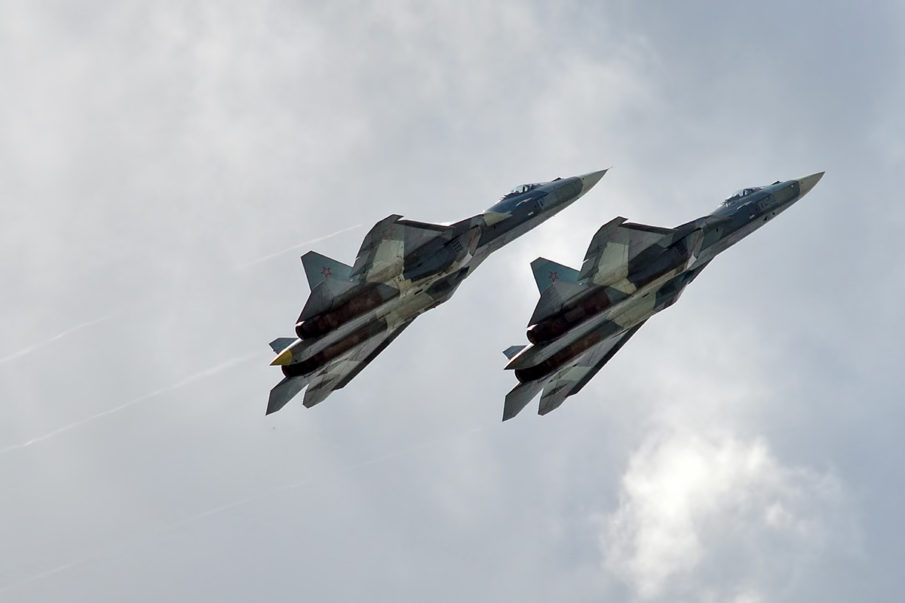Last week, images surfaced on social media that seemed to show two advanced Russian Su-57s, also known as T-50s, had been deployed to Syria, where Russian forces have been providing military support to Bashar Al Assad’s regime. Now, satellite imagery has confirmed not only the presence of the supposed 5th generation fighters, but have increased the count to four: meaning a full one third of al Su-57s ever made are now in Syria.
By Western standards, the Su-57 is still very much an experimental aircraft. With only 12 or so ever built and fewer in operational status, America would consider such an aircraft to be years away from any sort of operational status, but Russia has a long history of disregarding risks in defense projects that the West may see as grave – in large part thanks to state controlled media outlets being unable to call the government to task on failures or deaths.
Those same state owned media outlets have recently begun running stories about the Su-57 deployments that purport to be sourced from other, smaller (and still state-owned) media outlets in what has been common practice in the Russian media since the Cold War. In their reports, they’ve indicated that the fighters were sent to Khmeimim Airbase in Syria, but that neither the Kremlin nor the aircraft’s manufacturers have been willing to comment thus far. Nonetheless, “insider sources” (again, baring in mind that the Russian government owns these outlets) cited in Russian media have stated that the jets are not there for combat operations, but rather to “focus on electronic warfare and radar capabilities of the 5th-generation fighter jet.”
It’s worth noting that in these same stories, the recent attack on U.S. and SDF forces by Syrian militants backed by potentially hundreds of Russian mercenaries that was repelled soundly on February 7th is recounted rather differently than in other international outlets, claiming, “US forces attacked and devastated a group of pro-government forces, which included some Russian citizens.” They neglect to mention that the pro-government forces were attempting to capture SDF controlled oil fields on the U.S. side of the military deconfliction zone.
By citing one another as though they’re external sources, each outlet provides themselves with insulation from propaganda accusations while simultaneously adding to the credibility of one another as “highly cited” outlets. During the Cold War, this method helped to increase circulation and provide an outlet for conspiracy theories the Kremlin advanced through the media about U.S. foreign and domestic policies. In today’s day in age, that same “highly cited” methodology improves the Search Engine Optimization (SEO) for each article, making them appear higher in web searches and the like.
However, it does seem likely that the Su-57s presence in Syria is not for combat operations at all, but rather more of a publicity stunt. The aircraft, which have been in testing for years, are not considered fully operational, particularly because of a series of technological failures and budget cuts in recent years. The Kremlin, who had originally intended to order 100 of the Su-57 to counter America’s fleet of roughly the same number of F-22s, recently drew their order back to just 12 operational aircraft. It seems likely then that their presence in Syria is intended to garner publicity for two distinct purposes: to ensure the world knows that Russia, like China, is now beginning to field 5th generation fighters, and potentially to garner interest from potential buyers for the platform.
Image courtesy of WikiMedia Commons
Already have an account? Sign In
Two ways to continue to read this article.
Subscribe
$1.99
every 4 weeks
- Unlimited access to all articles
- Support independent journalism
- Ad-free reading experience
Subscribe Now
Recurring Monthly. Cancel Anytime.









